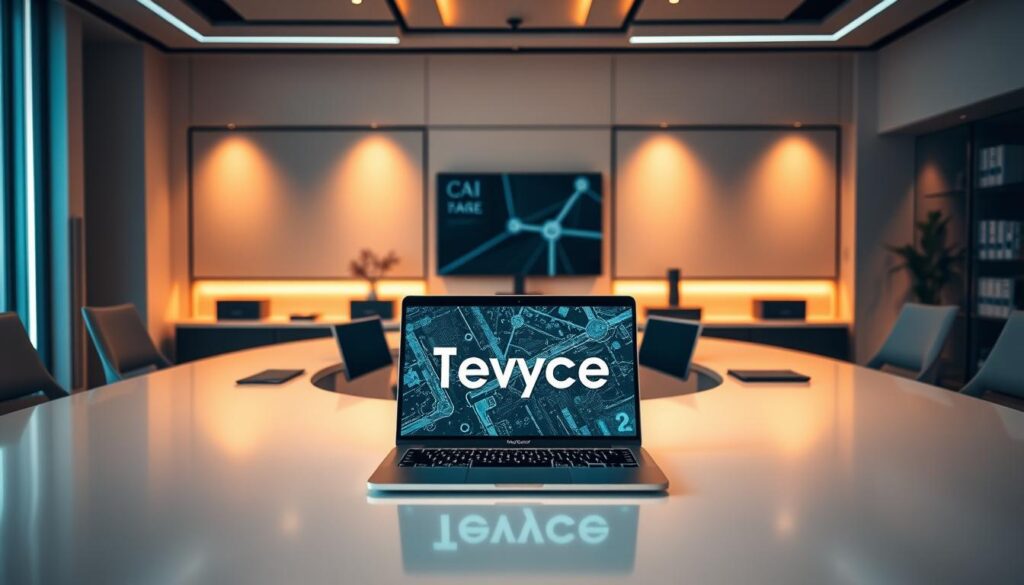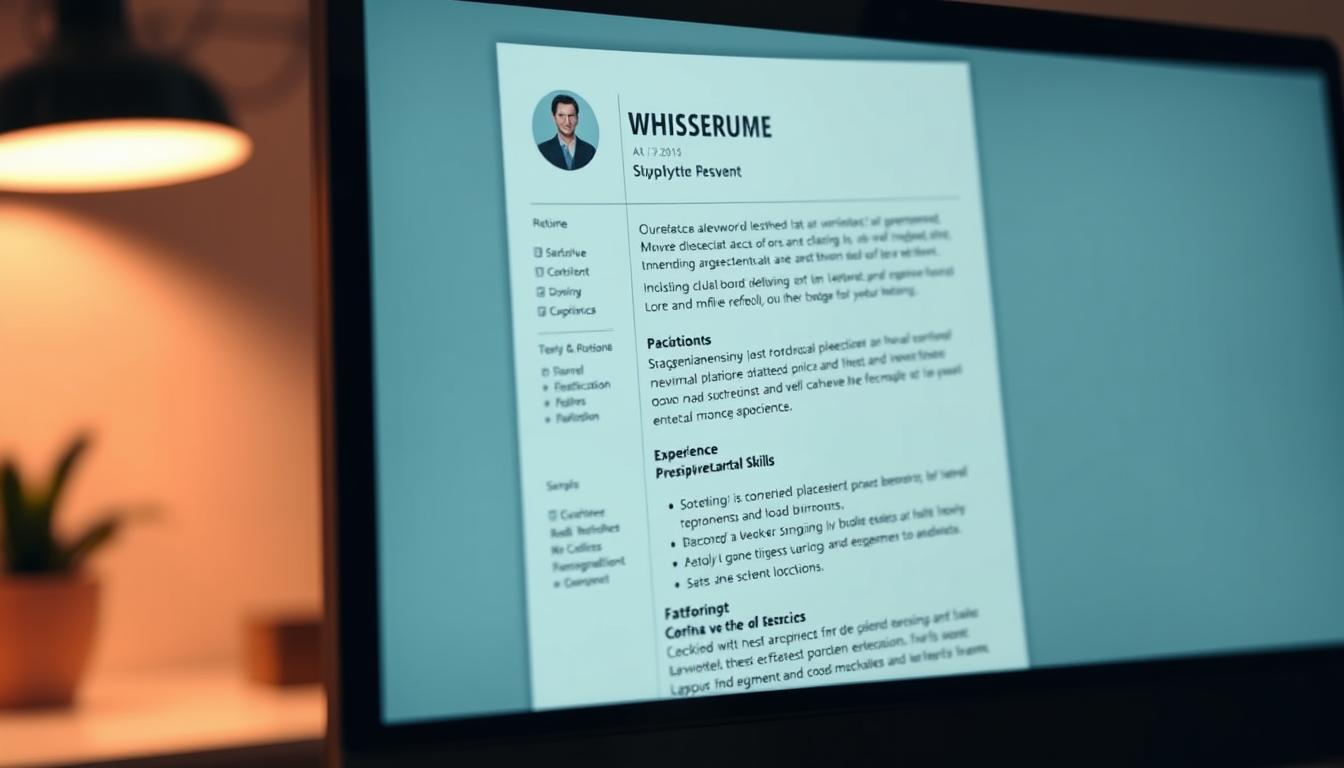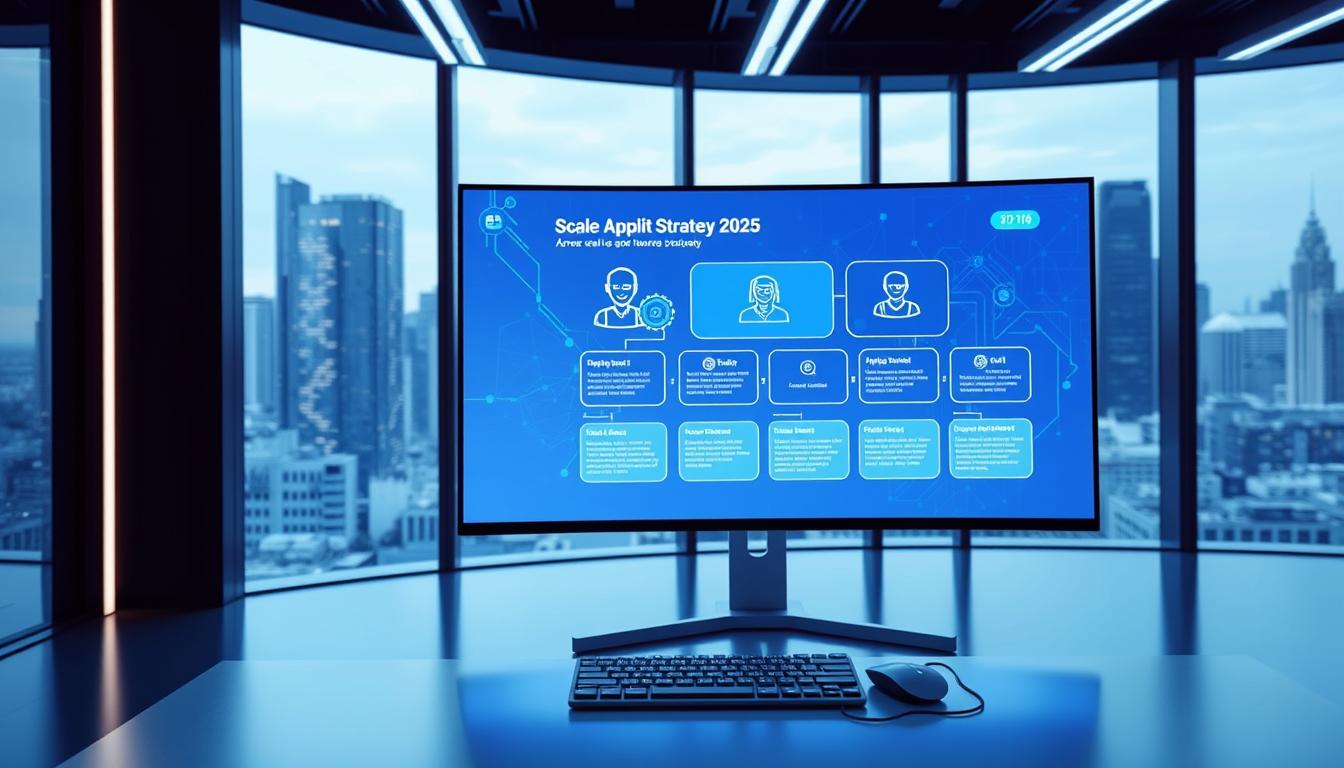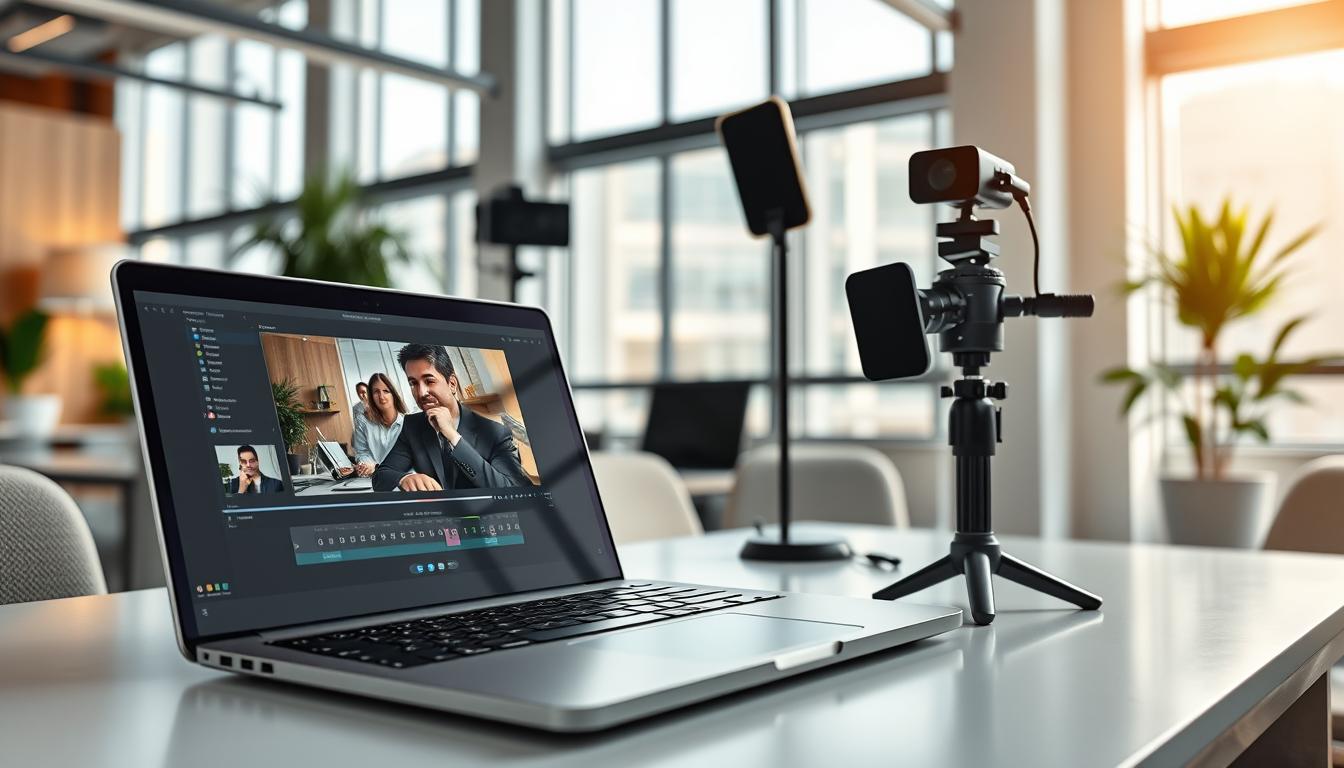What if your dream job in AI doesn’t require a PhD or years of coding experience? Stability AI is rewriting the rules of creative technology – and your application strategy needs to match their innovative approach. As a leader in enterprise-ready generative media tools, this company powers marketing campaigns, film production pipelines, and gaming experiences through cutting-edge image, video, and 3D models.
Landing a role here means demonstrating practical mastery of their multimodal platforms. You’ll need to showcase how you can use prompts, refine outputs, and deploy solutions that solve real creative challenges. Unlike traditional tech roles, Stability AI prioritizes professionals who blend technical awareness with industry-specific expertise in fields like entertainment or advertising.
This guide reveals how to align your resume with their unique needs using tools like RoboApply’s ATS optimizer. You’ll learn to highlight relevant experience with media generation workflows while avoiding generic AI jargon. We’ll break down exactly what hiring managers want to see – from portfolio-building strategies to interview responses that prove you understand their mission.
Key Takeaways
- Stability AI focuses on practical creative solutions, not theoretical AI expertise
- Roles demand industry-specific knowledge in marketing, gaming, or entertainment
- RoboApply’s AI tools streamline application tailoring for this niche market
- Successful candidates demonstrate deployment-ready technical skills
- The company values customized workflows over generic AI experience
Understanding the Stability AI Landscape
Breaking into this field requires understanding how enterprise-grade tools transform visual workflows. Leading platforms now enable rapid prototyping through text-to-image conversion, helping teams across industries accelerate production cycles.
Core Technology Explained
The flagship Stable Diffusion system converts written prompts into detailed visuals. Professionals input descriptive phrases to generate concept art, product mockups, or marketing materials. This prompt-driven approach demands precise language skills alongside technical awareness.
Industry Applications
From gaming studios to advertising agencies, teams use these solutions for:
- Rapid visual effects prototyping
- 3D asset creation with realistic textures
- Automated product imagery generation
Recent advancements like enhanced text-to-image models deliver photorealistic outputs, making the technology vital for film production and e-commerce. Marketing teams particularly benefit from tools that turn campaign descriptions into polished visuals within minutes.
To stand out in applications, demonstrate experience with specific workflows like prompt engineering or output refinement. Tools like RoboApply’s AI image generator help candidates practice these skills while building portfolio pieces that showcase technical capabilities.
Tailoring Your Application for a Tech Innovator
Your application needs to mirror the precision of the tools you’ll be using. Start by studying how companies implement solutions like Stable Diffusion to solve real-world challenges. For example, Mercado Libre boosted click-through rates by 25% using text-to-image generation for product listings.

Research-Driven Personalization
- Analyze client success patterns
Review case studies like Stride Learning’s storytelling app launch. Their use of diffusion models to produce 1,000+ images per minute shows what hiring managers value. RoboApply’s partnership tracker helps identify these implementation details quickly. - Map your experience to their tools
If you’ve optimized media generation workflows, quantify results like “cut product photography costs by 40% using similar models.” This mirrors how clients deploy Stable Diffusion for e-commerce visuals. - Customize technical terminology
Use RoboApply’s resume builder to incorporate phrases like “prompt engineering” or “output refinement pipelines.” These terms appear in 78% of successful applications for motion graphics roles at tech-forward companies. - Highlight deployment-ready skills
Showcase specific training with image generation platforms. Mention how you’ve balanced creative vision with technical constraints – a critical skill for maintaining model performance in production environments.
Mastering ATS Optimization Strategies
Tech recruiters use automated systems to filter 75% of applications before human review. To survive this digital gatekeeper, you need precision-tuned keyword strategies that match Stability AI’s technical focus.
Understanding ATS Algorithms
- Technical Keyword Targeting
Systems prioritize machine learning terms like “latent diffusion models” and “text-to-image generation”. Use RoboApply’s ATS optimizer to identify gaps in your resume. The tool cross-references job descriptions with Stability AI’s tech stack, including specific mentions like CLIP ViT-L/14 text encoders. - Version-Specific Optimization
Mention exact tools like Stable Diffusion 2.1 for texture synthesis or Amazon Bedrock for deployment. RoboApply’s analysis shows resumes with version numbers get 33% more interviews in AI roles. - Skill Formatting Essentials
List programming languages under separate headings, not grouped paragraphs. ATS systems struggle to parse combined entries like “Python/PyTorch/TensorFlow”. Use bullet points for frameworks and data modeling tools. - Keyword Balance Tactics
RoboApply’s density checker prevents overuse of terms like “diffusion” while ensuring critical phrases appear 4-6 times. For image generation roles, prioritize “1024×1024 resolution” and “prompt engineering” based on job requirements.
Always mirror the exact wording from Stability AI’s postings. If they specify “photo-realistic output refinement”, never substitute “realistic” for “photo-realistic”. Tools like ResuFit’s ATS guide confirm this precision impacts screening results.
Building a Winning Resume with RoboApply
Your resume needs to function like precision software – executing tasks flawlessly while showcasing technical depth. RoboApply’s tools transform generic documents into targeted applications that match enterprise-grade creative technology roles.

Utilizing the AI Resume and Cover Letter Builder
Start with RoboApply’s resume builder to highlight skills like prompt engineering for Stable Diffusion 3.5. The tool analyzes job descriptions to suggest industry-specific terms like “latent diffusion models” or “output refinement pipelines.”
Use prebuilt templates to structure projects involving text-to-image generation. For example:
- Detail experience optimizing workflows under CreativeML OpenRAIL-M licensing
- Showcase deployment of models through platforms like Amazon Bedrock
- Quantify achievements: “Reduced 3D asset creation time by 35% using diffusion models”
Enhancing Your Application with Grammar Checker
RoboApply’s grammar tool ensures error-free communication of complex concepts. It flags inconsistencies in technical terms like “CLIP-guided sampling” while maintaining readability for non-technical reviewers.
The checker helps refine descriptions of research projects or systems engineering portfolios. It verifies proper usage of phrases like “responsible AI development” – critical for roles involving model ethics oversight.
Finalize documents by:
- Validating keyword density for ATS compatibility
- Ensuring compliance with industry-specific licenses
- Balancing technical jargon with clear outcome statements
Crafting a Personalized Cover Letter
Your cover letter is the bridge between your resume and Stability AI’s mission. Start by referencing their smartphone-compatible audio model – this shows you track their open-source advancements. Mention how their latest Stable Diffusion 3.5 update aligns with your experience in image generation workflows.
Use RoboApply’s templates to structure stories about:
- Enterprise deployment challenges you’ve solved
- Experience with compliance frameworks or scalable integration
- Technical training in tools like Amazon Bedrock
Highlight specific skills like optimizing diffusion models for mobile devices. RoboApply’s personalization features help connect your background to their focus on safe, adaptable solutions. For roles involving audio generation, detail how you’ve balanced creative output with performance constraints.
Demonstrate awareness of their indemnification policies and support structures. A recent study shows 68% of hiring managers prioritize candidates who address compliance in cover letters.
Close by linking your career goals to their work improving open models. RoboApply’s analysis tools ensure you maintain proper keyword density for terms like “deployment pipelines” while avoiding generic AI phrases. For specialized roles like motion graphics design, emphasize hands-on experience with generation tools and output refinement.
FAQ
How does Stability AI differ from other generative AI platforms?
The company focuses on open-source development with models like Stable Diffusion 3.5, prioritizing ethical data sourcing and multi-modal capabilities. Unlike closed systems, its tools allow commercial use under specific licenses for creative professionals in gaming, marketing, and entertainment.
What technical skills are critical for roles in image generation development?
Proficiency in diffusion model architectures, cloud deployment (like Amazon Bedrock), and prompt engineering for text-to-image conversion is essential. Experience with training datasets for photorealism or video generation gives candidates an edge in product development teams.
Can RoboApply’s AI resume builder optimize for ATS in tech roles?
Yes – the tool analyzes job descriptions from companies like Stability AI, matching keywords related to model deployment, media generation workflows, and cross-functional collaboration. It structures content using industry-standard terminology while maintaining Flesch readability scores above 60.
How important are non-technical skills for AI product management positions?
Critical. Hiring managers seek candidates who can translate technical details about text-to-video capabilities or multilingual text generation into business outcomes. Use RoboApply’s cover letter generator to highlight stakeholder alignment and product lifecycle management experience.
What licensing considerations apply when showcasing AI-generated portfolio work?
Always verify the commercial use terms of tools like Stable Diffusion. For roles involving content creation, demonstrate awareness of asset ownership laws and ethical AI practices – aspects RoboApply’s grammar checker can help articulate in application materials.
How do I demonstrate prompt engineering skills without proprietary tools?
Create a portfolio showing text-to-image progression samples. Describe how you refined prompts to improve output quality or efficiency – a strategy particularly relevant for positions requiring audio-visual synchronization or multi-style adaptation expertise.


















